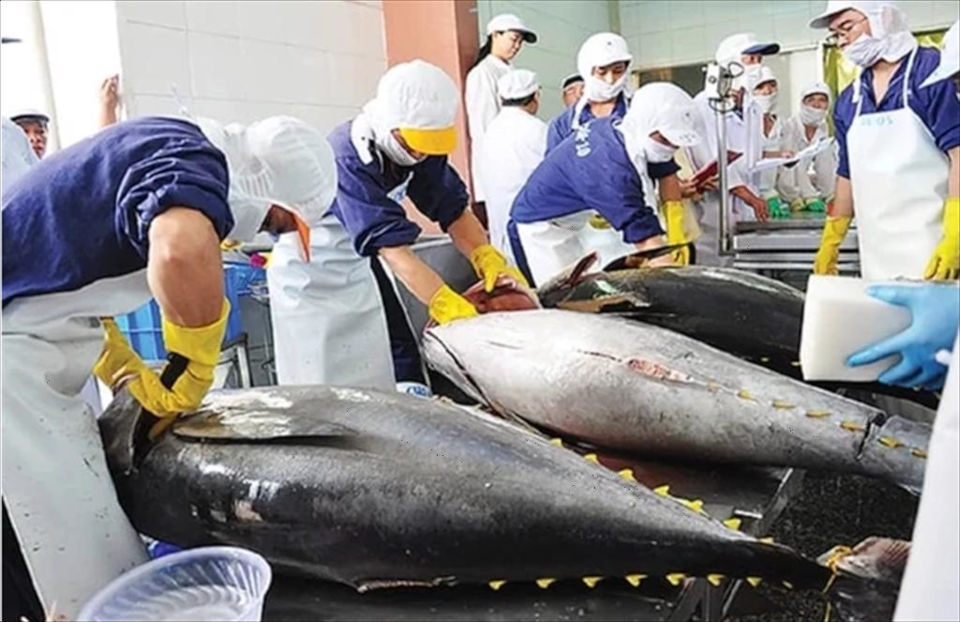
Tuna exports expected to grow by 20% in H1
Tuna exports are projected to reach 456.8 million USD in the first half of 2024, a year-on-year increase of 20%, according to the Vietnam Association of Seafood Exporters and Producers (VASEP).
HCM City (VNS/VNA) – Tuna exports are projected to reach 456.8 million USD in the first half of 2024, a year-on-year increase of 20%, according to the Vietnam Association of Seafood Exporters and Producers (VASEP).
After decreasing in 2023, exports rose by 22% in the first five months of the year to 388 million USD.
Shipments of canned tuna products, bagged tuna and frozen loin/fillet increased by 44%, 24%, and 7%. Exports of frozen whole tuna nearly tripled.
Exports to most markets increased, with those to the US and the EU, the two largest, rising by 30% and 37% and accounting for 37% and 22% of total exports.
Exports to Israel, Russia and the Republic of Korea rose by 64%, 58% and 66%.
Speaking at the association’s annual general conference in HCM City on June 10, Cao Thị Kim Lan, Director of the Binh Dinh Fisheries Joint Stock Company, said in 2023, Vietnam became the world’s 5th largest exporter of tuna behind Thailand, Ecuador, Spain, and China, rising from the 8th place 10 years ago.
She said a notable milestone was achieved in 2022 when exports of the fish topped 1 billion USD.
She spoke about the potential of the tuna industry. “We have hi-tech tuna processing factories, experienced and skilled labourers and reputable products that are exported to nearly 100 markets.
“With more than 30 years of experience, I believe the Vietnamese tuna industry can grow further if we make efforts to overcome internal challenges and resolve difficulties faced by the industry with support from the Government.”
She said exports could reach 1 billion USD again this year if the raw material shortages are resolved.
She pointed out more than 50% of exports are processed from imported tuna.
Firms have difficulty obtaining statements of catch for raw material at fishing ports (the statement issued by competent authorities to verify raw materials from fishing that do not violate IUU regulations) after finalising the purchase of raw materials, according to Lan.
She listed a number of reasons why they were unable to get the statements, including issues related to safety conditions and catching in illegal waters.
Another issue is that a number of fishing vessels have installed the VNPT electronic monitoring system but regularly encounter technical errors, causing a disconnection between the vessels and the system monitoring fishing activities for six hours or more, even two to three days.
Buyers could not know these issues when they purchase the fish, she said.
She said localities and other competent agencies needed to implement well checking hygiene and food safety conditions of fishing vessels and fishing ports in line with Government regulations.
She said the Ministry of Agriculture and Rural Development should consider amending regulations so that the certificates of raw materials could be issued immediately when loading and unloading are completed from fishing vessels under the supervision of port staff.
“In cases where fishing vessels lose connection due to telecom service providers’ fault, the ministry needs to provide guidance on issuing the certificates to businesses,” she said.
She said the ministry needed to establish “a digital input data system connecting fishing ports and the Government. This is basic information for the Government and ministries to issue appropriate directions and policies.”/.
( Vietnamplus.vn )

